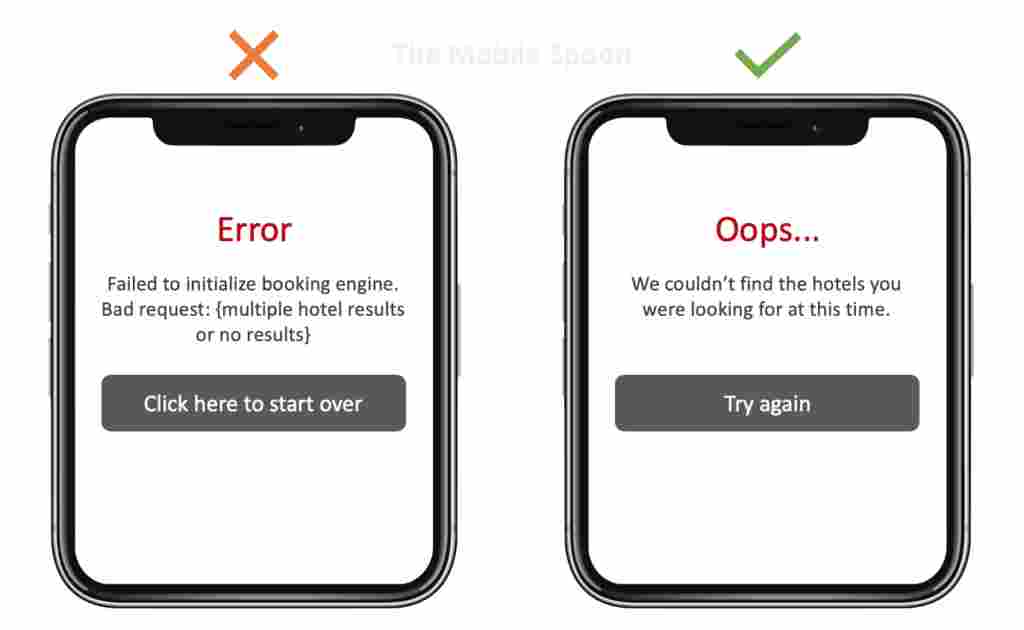In all these years, businesses have changed the way they functioned by bringing newness. From moving to websites and mobile applications to becoming more customer-centric, they have done all to bring a better customer experience. Digitalization has become more prominent, considering everyone is upheld on mobile phones. There is a promising evolution, and we cannot stop applauding the effort businesses put into bringing out more outstanding results. But, you always have room for improvement, and that is precisely why we are talking about the rules that can make UX writing more effective and impactful.
As we know, writing is a part of the business. It lets you convey your message effortlessly. Writing is used everywhere as it enables you to share thoughts, ideas, and communicate feelings. In the case of business, it becomes evidently more important as a UX writer is more focused on bringing greater satisfaction to customers when they read the written text. They have to pay attention to smaller details to ensure the content is catchy, engaging, and above all, adds value to the readers. A business writer thinks of two steps ahead and analyses the results much before the content is shared in the public domain. Let us talk in detail about UX writing and its effects.
What is UX writing exactly?
UX, also called as User experience, is a concept based on offering a more extraordinary experience to the user he or she uses your digital product; it can provide your official website or a mobile application. UX writing is a skill as well as professional expertise in the direction of the overall customer experience, how smooth and seamless it is, and every other detail that plays a role in directing the user’s experience, UX writing is held responsible.
General content published on the web is generally copywriting, which is focused on telling a story and selling a product or a service. However, UX writing is more focused on getting users on the same page as they want them to be. Some of the instances of UX writing deals with to navigate are buttons, menu headers, 404s, pop-ups, instructions, and page headers.
Why is UX writing considered impactful?
In today’s cutthroat competition, being at the top of the game is very vital. If your brand lacks quality efforts, some other brand will replace you overnight. Based on a study, about 97 percent of clients say that user experience is one of the most crucial parts for them, and 90 percent claim they would not use a mobile application if it’s a struggle for them to navigate.
Therefore, it can be said that it has become increasingly crucial for brands to consider user experience as one integral part. UX writing and UX designing are very important in taking the company’s progress to the next level.
9 Rules to make UX writing more effective for your website
To ensure your business is not lacking the potential to bring maximum customer experience, you must go through these rules and count them in your functioning:
#1. Keep it brief and easy to comprehend:
UX writing is not too flashy; instead, it is short and straightforward. UX writing holds word count as a prime aim and abides by it at all times. The interactions between the reader and the digital product should be smooth, so the most impactful manner of communicating a thought is to get straight to the point.
It would be best if you kept it precise, i.e., say out your purpose loud and clear. You may feel scared, but it is the most efficient manner possible. You must focus on the quality of content and ensure that every word is building a pitch for you. You may create lengthy content, but if it does not carry your messages clearly or add any value to the overall objective, then it is merely futile.
The large piece of text doesn’t work out well every time. In the busy schedules, users hardly read all UX text – they simply scan through the relevant points. Another factor is to avoid using technical terms as it takes more time for your users to comprehend the message. If the text is simpler and shorter, then the user will be more satisfied.
#2. Begin with the purpose in mind:
Whenever you are writing sentences that explain any instruction to users on how to do something or achieve a planned objective, always place the purpose before the action. This way, you can make it simpler for users to identify the objective and work accordingly.
For instance, instead of a tap button that says, “Click here to know more,” simply say, “Know More.” By making a quick instruction, you can ease the hard work and save time. This will directly question the users if they want to execute the action or leave.
You may find it unimportant, but in the B2B sector, every small detail is worth counting. It is very essential if you seek swift and impactful communication.
#3. Keep specific verbs handy:
As a UX writer, your focus should be on using specific verbs rather than generic ones in UX writing. They are more impactful on users and get the message conveyed clearly.

Image Source: https://usabilitygeek.com/how-ux-writing-can-help-create-good-design/
When you choose to use generic verbs, there are high chances that the audience may misinterpret or get confused about what you are trying to say. This may turn out bad as it will say the exact opposite of what you want.
Being transparent and direct will remove the chances of misinterpretation. This not only assists the reader in understanding and interact with your product quickly, but it also allows you to convey the instruction of the conversation between you and your users freely.
#4. Being consistent is the key:
Refrain from being inconsistent when writing a copy as it can bring out unnecessary confusion. Be sure of using the same brand tone, objective, platform, and customer approach.
Avoid changing brand tone as committing such errors in UX writing will not only create confusion in the user’s experience but also reflects an unprofessional approach.
#5. Use the present tense but with an active voice:
When you are writing a copy, it is best suited if written in the present tense as that keeps the copy more relevant and erases any anticipatory feelings. Moreover, it keeps reminding users that their experience with the product is being discussed in the present, so it keeps them more interested in the content.
When a copy is in the active voice, it engages the reader and makes more sense to the conversation. In the case of passive voice, the reader can lose interest and may have fewer chances of lead generation.
You may find this insignificant, but your brand must flourish in gaining more engagement and creating healthier conversions. UX writing has a set of rules, and this is considered one of them.
#6. Use statistics or numbers:
Make sure to use numbers instead of typing the number in words as it reduces reading time. The quicker and smoother the written copy is, the better it is for them to understand.
For instance, the difference between the number 68 and having to read sixty-eight. The number 68 is a lot more convenient to read. It also takes less space on your mobile screen while reading.
#7. Do not disclose all the information right away:
Sharing too many details at once with your users can overwhelm them. At times, you can split the information in multiple content posts as this will keep them curious about the next content and keep them contented with the present write up.
In reference to UX writing, it is always better to display the details or the main point of the information first, then provide related details later. This can be called as progressive disclosure.
Following this way of splitting the details will ensure that your users don’t get burdened with information overload and also gives them excitement for more options in the future. About 52 percent of users claim that a bad mobile experience is enough to change their minds and not engage with a brand.
#8. Make communicative elements easy to find:

Image Source: https://uxplanet.org/16-rules-of-effective-ux-writing-2a20cf85fdbf
There must be points of discussion in your product like buttons, dropdowns, and let us know more. These should be easy to find when the reader is going through the UX write up and follow the appropriate outcomes.
This is an easy yet crucial rule that must be taken into consideration. Practicing this rule will enhance the impact of your UX writing, ensuring that users know which area of your product can lead them to interactions, making their views more counted.
#9. Avoid the chronological details:
Try to avoid using chronological information as much as possible as users generally go to check the calendars and leave content half-read. You can avoid using ‘today,’ ‘tomorrow,’ and ‘yesterday.’ Rather, you can also use terms like ‘in less than 2 weeks’ or ‘coming month.’ This requires less effort and commits better.
Concluding Note:
These rules are great if you wish to make UX writing more effective. They will surely add quality and certainty of success. By using these in your work will help you direct your users and interact with them effectively. More than 60 percent of users feel more enthusiastic about the brand once they read the content present on the site. Therefore, we aim to use these rules, and we promise it will make the user experience more pleasant and seamless with your product.




